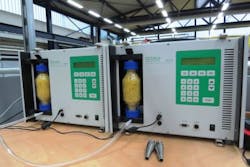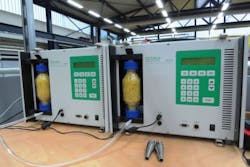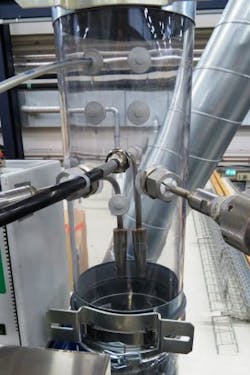Comprehensive exhaust air analysis during laser processing of plastics available
To provide optimal protection for machine operators and the environment, it is necessary to know exactly which emissions are being released during laser processing of plastics. Recognizing this, scientists at the Laser Zentrum Hannover eV (LZH; Hannover, Germany) and the Kunststoff Zentrum SKZ (Würzburg, Germany) have compiled a comprehensive analysis of the main emissions released. This information is now available as emission datasheets.
What is the influence of the laser output or process speed on the hazardous materials released? How are the materials, process conditions, and emissions related? Based on these and similar questions, equipment for material removal, cutting, and welding of plastics was investigated using a mobile measurement unit developed at LZH. It can be integrated in any exhaust system and makes direct and guideline-conform measurement of the exhaust possible, with subsequent evaluation according to the Technical Instructions on Air Quality Control (TA Luft). Parallel to this, measurements of the workplace ambient air were taken and the hazardous material concentrations were compared to the workplace threshold levels, according to the Technical Guidelines for the Handling of Hazardous Substances (TRGS) 900/910.
The main emphasis of the investigations is on application-relevant plastics, such as polyethylene (PE), polypropylene (PP), polycaprolactam (PA6), polycarbonate-acrylonitrile butadiene styrene (PC-ABS), and carbon fiber-reinforced plastics (CFRPs). The two research institutes examined the released particles and gases for more than 100 chemical compounds. Based on the information gathered, they determined the dominant influencing variables for the individual processes, which led them to create a basis for emission-reduced processing.
Results of the investigations are now available as emission datasheets, and they can be ordered from the LZH's Safety Technology Group. Also, a prevention matrix with suggestions for process and material specific prevention measures was made. The results of the investigations will also become a part of the laser safety database, which can be viewed on the LZH website.


